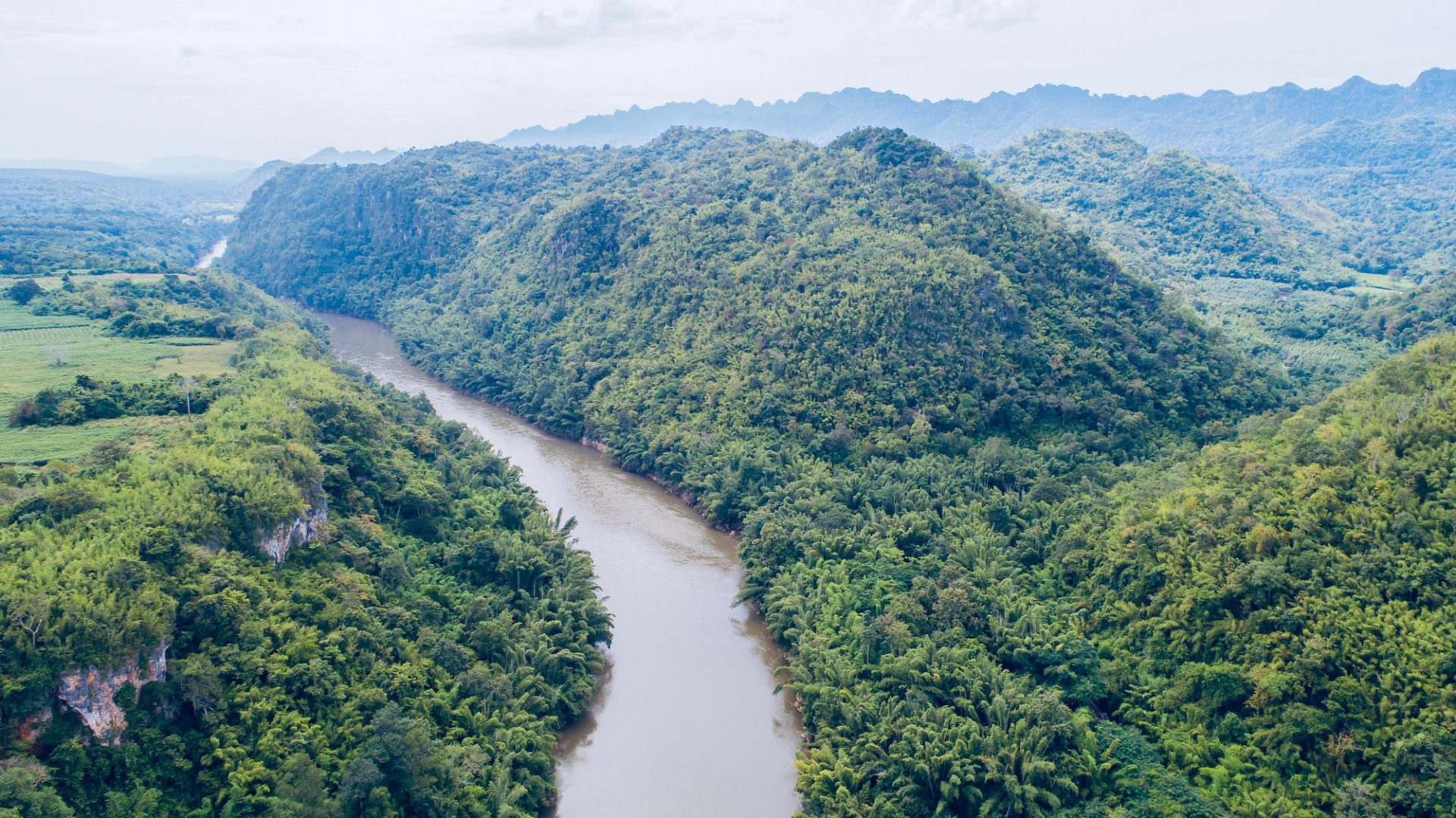

The beauty of Kanchanaburi speaks for itself. A little treasure cove of scenic splendors in Thailand remains shrouded in the mist to be explored. Nearby Attractions of tourist importance are plenty and some may be visited conveniently from River Kwai RESOTEL resort such as War Cemetery, Hellfire Pass Memorial, Art Gallery and War Museum, The famous Bridge over the River Kwai (Death Bridge), Tiger Temple, Thailand Burma Railway Centre (Museum), Lawa cave, Mon Village & Temple, Somdet Phra Sri Nakharin Park, Don Chedi Archaeological Site, Erawan waterfall, Prasat Muang Singh historical park, Saiyok Waterfall & National Park and etc.
During the World War II, the Japanese wanted to seek to shorten the supply lines between Japan and Burma in preparation for an eventual attack on British India. The Japanese started work on a railway from Thailand to Burma through the river valley for a distance of about 415 kms. The Japanese enforced roughly 250,000 Asian laborers and 61,000 Allied prisoners-of-war (POWs) to construct 260 kms of rail on the Thai side, approaching the Three Pagodas Pass on the border. Unfortunately, it is estimated that 100,000 Asian laborers and 16,000 Allied prisoners lost their lives during that period due to many factors. Today there are daily trains running from Kanchanaburi to the terminus at Nam Tok station for a distance of 50 kms on this historical route. This journey is one of the very exciting things to do for tourists.
During the World War II, the Japanese wanted to seek to shorten the supply lines between Japan and Burma in preparation for an eventual attack on British India. The Japanese started work on a railway from Thailand to Burma through the river valley for a distance of about 415 kms. The Japanese enforced roughly 250,000 Asian laborers and 61,000 Allied prisoners-of-war (POWs) to construct 260 kms of rail on the Thai side, approaching the Three Pagodas Pass on the border. Unfortunately, it is estimated that 100,000 Asian laborers and 16,000 Allied prisoners lost their lives during that period due to many factors. Today there are daily trains running from Kanchanaburi to the terminus at Nam Tok station for a distance of 50 kms on this historical route. This journey is one of the very exciting things to do for tourists.
Details: Open daily from 9.00 a.m. to 4.00 p.m.
How to get there: 75 kilometers from Kanchanaburi City. The cave can be accessed either by boat or car. Chartered boats are available at the Pak Saeng Pier, the trip takes 45 minutes. Visitors traveling by road can cross the bridge at Ban Kaeng Raboet and continue on foot. Our guests can start their journey at Phutakien Pier (Resotel pier) and then take mountain bike to the cave. It takes about 15 minutes.
This is the place where the remains of 6,982 POWs died during the construction of the Death Railway are buried.
Details: Open daily from 8.30 a.m. to 6.00 p.m.
How to get there: The cemetery, which is located on Saengchuto Road(Highway 323), Amphur Muang, opposite the Railway Station, just 1.5 kilometres from the TAT office.
The park, covering 550-square-kilometers, is the site of the seven-tiered Erawan waterfall, one of Thailand’s loveliest waterfalls. The falls take the form of a series of cascades and pools over and among the rocks, and are supposed to be shaped like the divine Indra’s three-headed elephant, hence their name.
Details: Open daily from 8.30 a.m. to 4.30 p.m.
How to get there: The national park is 65 kilometers from Kanchanaburi along Route 3199. Visitors may take a bus departing from the Kanchanaburi Bus Terminal to the waterfall every 50 minutes from 8 a.m. to 5.20 p.m. The journey takes 1.5 hours.
The museum is under Australian management from the Office of Australian War Graves, whom are able to provide historical information on request about the railway and activities that occurred within that era to interested visitors. The Museum also has a theatre which shows a short video made from war footage of the construction of the railway and dialogue from a number of Australian ex-POWs.
Details: Open daily from 9 a.m. to 4 p.m.
How to get there: The site is located in a thick forest near Km. 139.3 of the Sai Yok-Thong Pha Phum Road (Highway No. 323).
The Thailand-Burma Railway Centre in an interactive museum, research and information center dedicated to presenting the story of the Thailand-Burma Railway built during the World War II.
Details: Open daily from 9 a.m. to 5 p.m.
How to get there: It is located on the western side of the main Kanchanaburi War Cemetery (Don Rak) by approximately 100 meters.
Mallika Village is an ancient village that’s been restored and maintained to its former glory – giving both locals and travellers the opportunity to experience what it was like living in ancient Siam. It’s a living museum where you get to walk around and interact with villagers (staff dressed in ancient costumes), and even play the role of villager yourself. Visitors can rent the ancient costumes and most Thai visitors do, so as you walk around and encounter these ‘villagers’, you’ll really feel as if you’ve travelled back in time.